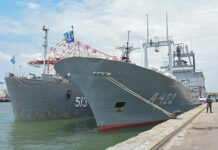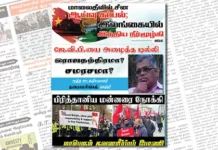Sri Lanka has begun importing large quantities of oil from Russia in a sharp supply shift that highlights how cash-strapped countries are increasingly taking advantage of price discounts created by western sanctions on Moscow.
Sri Lanka, which effectively ran out of fuel this year due to a financial crisis, has since May sourced more than half its crude from Russia, according to data from analytics providers Refinitiv and OilX. It is the first time Sri Lanka has imported Russian oil since at least 2013, according to data from research firm Kpler.
Analysts said Sri Lanka’s pivot to discounted Russian oil reflected a trend of financially stressed countries scrambling to cut import costs in the face of rising inflation and a strong dollar. After President Vladimir Putin’s invasion of Ukraine in February, the G7 nations said they would phase out or ban imports of Russian oil. India and China have become buyers of Russian oil, increasingly joined on a smaller scale by inflation-hit countries including Pakistan, Bangladesh and Cuba.
All these buyers and Sri Lanka abstained from a UN General Assembly resolution in March that condemned the Russian invasion. Sri Lanka was “a bellwether of what we can expect poorer nations to look to be doing over the next few months”, said Neil Crosby, a senior analyst at OilX.
“They’re trying to reduce their import costs, they’re under financing pressure and in that context, Russian barrels look very tempting.” Since February, Russian Urals crude has on traded at an average discount of about $30 per barrel to the North Sea Dated benchmark price, according to data provider Argus Media.
Sri Lanka’s 7.1mn barrels of crude oil imports last year came from the United Arab Emirates, but Russia has accounted for 2.6mn barrels since May, about 79 per cent of the total ordered, according to Refinitiv. Data from OilX showed 60 per cent of Sri Lanka’s crude imports since May has come from Russia.
Thanh-Long Huynh, chief executive of data analytics firm QuantCube, said the sales to Sri Lanka underscored how Russian oil previously bound for Europe was finding new markets as the EU tried to restrict imports. “The first two Russian shipments arrived from Primorsk and Novorossiysk, ports located in the Baltic Sea and Black Sea, respectively,” he said. “Since these ports historically served European ports, they indicate the development of new trade routes for Russian energy.”
Sri Lanka, which defaulted on its debts in May, has struggled with severe shortages. Energy supplies ran so low this year that blackouts lasted up to 10 hours and drivers had to queue for entire days for petrol. A new rationing system has eased shortages, while government revenues from exports and remittances have helped fund imports, including discounted Russian fuel. Sri Lanka’s state-owned sole crude oil refinery shut this month but is expected to reopen in a matter of weeks when a Russian crude shipment arrives, an industry executive said. Analysts said it was unclear whether Sri Lanka was buying directly from a Russian oil company — which would suggest a government-to-government deal — or buying spot cargoes from traders.
Sri Lanka’s former president Gotabaya Rajapaksa in July asked Putin to help his country import fuel. A spokesperson for Sri Lanka’s current president, Ranil Wickremesinghe, did not respond to a request for comment. David Fyfe, chief economist at Argus, said steep discounts on Russian crude would continue, keeping it an attractive option.
“The question really becomes, what are the risks around insurance, banking, finance, shipping provision [and] additional US sanctions?” Fyfe added. “Assuming the current conditions continue, if you were being offered crude at $25, $30 per barrel below [the Brent benchmark] . . . why wouldn’t emerging economies purchase Russian oil?”
Financial Times.





